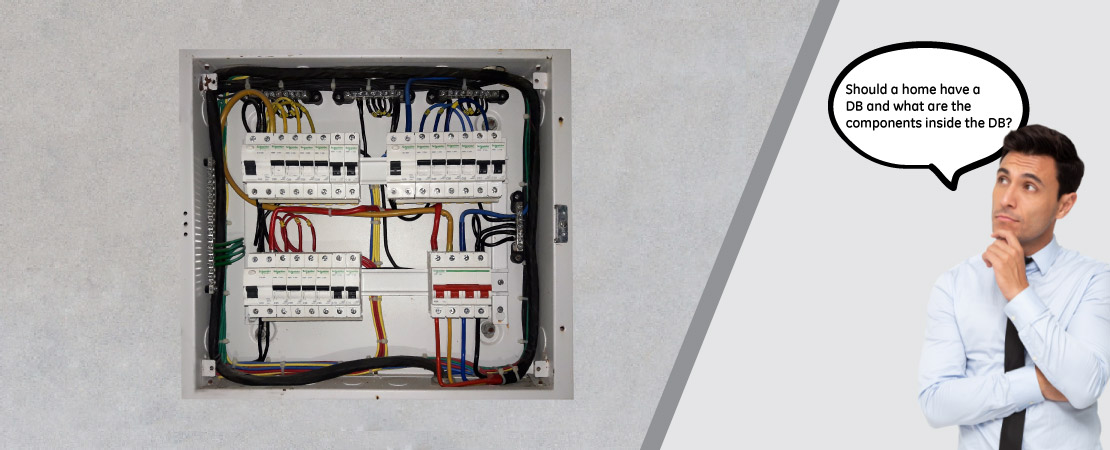As a home owner, one should know the basic parameters of the electrical system of the home one lives in.
Electrical system is a huge system divided into generation, transmission and distribution system, all the parts being taken care off by respective departments. The wiring inside a house can be a complicated matter for the owner but some basic things are easy to be kept in mind by the owner. Firstly in a home the standard voltage is 220V.
Here are answers to some of the basic home electrical system questions:
Q-1. Should a home have a DB and what are the components inside the DB?
Ans. Every home must have a DB. A DB stands for Distribution Box. DB is a component of an electricity supply system that divides electrical power and feeds into subsidiary circuits, with protective circuit breaker for each circuit in a common enclosure. One must ensure that each DB is with MCB for each circuit and also RCCB is installed. Once you are assured that DB with accessories are present then get it inspected for proper amperage, operation, safety and even load distribution.

Q-2.Why RCCB is a must?
Ans. RCCB stands for Residual Current Circuit Breaker which has been designed to protect a circuit from leakage fault. RCCB is a must because it provides protection even from a small leakage current generated by human touch or insulation failure of wire. MCB does not provide this level of protection. So the home owner / seller / buyer must ensure that RCCB has been installed at the home.

Q-3. What is electrical wire colour code and why is it important?
Ans. One must have got confused at some time on the sight of different colour wires in electrical wiring. Questions arise for the different colours of wires such as why different colours and why not same colour? For your information the wire colours used, are based on the Electrical colour code for wires which defers from country to country. In India for a single phase (220V) electrical wiring, the code followed is RGB i.e. Red colour wire for Phase, Green colour wire for earthing and Black colour wire for neutral connection. In case of three phase, two more colours are followed – Blue and Yellow, in which case, Red, Blue and Yellow coloured wired are used for phase connection, Green for Earthing and Black for neutral. So now you know which colour wire stands for phase, neutral and earthing in your wiring system.

Q-4. Earthing connection provided at which of the three-pin socket points?
Ans. The first thing that comes to mind is that at which terminal / hole in a 3 pin socket is the earthing terminal? Generally Earthing terminals are of a higher diameter. Hence checks to be done for earthing connection, which is a must as it protects against the leakage current causing shocks.


